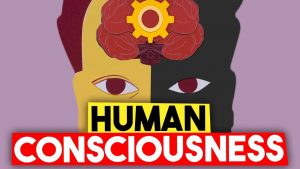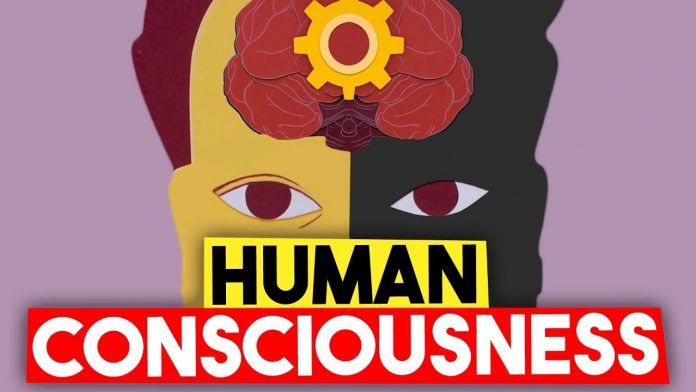This editorial is by Sun News Tucson contributor Mr. Conlan Salgado
Humans are able to view themselves as metaphors by casting their consciousness out of their physical bodies. This I endeavored to establish in a preceding essay. Now before I come to the final conclusion for which I have been setting forth these theories, two more hypotheses should be considered. I would suggest, perhaps cautiously, but still I would suggest that this ability to view the self as a metaphor is really the basis for the conception of human personality. Personality, according to my reasoning, is the expression of a person’s metaphor perception. This means that emotion is very closely related to personality, but also that emotion is subservient to personality. In order that my reasoning be clarified, let me retreat to my former statement that personality is the expression of metaphor self-perception. For instance, imagine that a certain person is going into a high-profile dinner party with many famous people in attendance. His personality is apt to be different from the few hours previously where he was simply lounging on the sofa. How does this vindicate my saying that personality is an expression of one’s ability to view himself as a metaphor? Well, it is simply the idea that this certain person proceeding into his dinner party is able, in an abstract fashion, to construct alternate realities with himself at the center, with each abstract reality representing to him what would, or could occur, if he spoke in this manner or manifested that personality. He at last then is able to elect which metaphorical reality he views most favorably and assume the personality he considers will bring about such a reality. (This assumes also that his consciousness is properly informed by his given circumstances). As it regards personality disorders, there is an abundance of theories about their cause. Perhaps it would not hurt to add another? I believe that personality disorders occur because a person is no longer able to see himself or others as a proper metaphor. A metaphor necessarily requires a circumstance in which to be presented, but the circumstances of a metaphor are implied or described (i.e. a poem may present life as a “fragile flower”, but the poem must then construct an environment in which this flower exists, or rely on the convention of a flower, say, existing in a field). Personality disorders come about because a person is no longer able to perceive his environment correctly, and therefore he is unable to present his person as a metaphor within a sensible circumstance. Almost as a natural instinct, he wishes to impose a circumstance on his surroundings in which he can sensibly see himself as a metaphor (school shootings and shooters would present an interesting case-study). This hypothesis also invites the questioning of what external, or even internal, phenomena would inhibit an individual from perceiving his environment, or what phenomena would suggest to him that he is no longer able to present himself as a metaphor within a sensible circumstance? I propose two tentative answers: firstly, that this aforementioned inhibition is induced when a certain individual is made to believe that how he views himself, metaphorically, is incorrect. As to this case then, it would be the metaphor of the self which is being disturbed as opposed to the circumstances in which the self is presented. Although examples are dangerously hypothetical, let me imagine a simple one: at fifteen years of age a child discovers that his parents are adoptive, that he is not truly their biological child, that they are not truly his biological parents. The child’s circumstances remain uniform, but how he perceives himself within his circumstances is interrupted. He no longer should perceive himself as a child in relation to his parents, but as a foster child in relation to foster parents. To the human consciousness there is often a significant difference. The second cause for an inhibition of metaphor perception is when a person’s circumstances are changed on a cataclysmic level. If a woman were standing outside a room waiting for her husband and then her husband comes out of the room dripping with blood and carrying a knife, then how she views herself within the circumstances is likely to be toppled very quickly. This toppling of self-presentation is the causation of an inability to respond rightly or correctly in certain situations. So far though, many problems have been created and very few solutions, or even diagnoses, have been offered. There is certainly one simple solution, which although simple, is maddeningly difficult to achieve. The solution is merely this: that the human person learn to develop a subconscious identity that depends not at all upon circumstances. How is this to be accomplished though? It should be noted very strongly that I mentioned a subconscious identity; humans beings are not intellectually or physiologically capable of surrendering all circumstantial identities. A human who is genetically male, epidermically white, possesses a PhD, is attracted to females, and has exactly 1.2 million dollars in his bank account for immediate drawing cannot be expected to surrender all these identities at once. Still, these identities are external and circumstantial; some of them refer to internal realities, for example, a PhD indicating academic acumen, which is an internal faculty (intellect), but the identity of PhD is non-internal. External and circumstantial identities are conscious identities, which are the ones which sustain our perception day to day. If the greatest and deepest and most eternal identity of that same man was simply, “I am a soul”, then no circumstance which he encounters is able to affect his ability to perceive himself as a metaphor. A man may lose money, but a man does not lose a soul. Even such an identity such as, “I am a human being”, can be lost, for people often lose their humanity, and everyone must lose his life. “Human being” is never an eternal identity, and for that reason I am inclined to doubt whether it is able to sustain one throughout an entire lifetime, especially if the life he lives is troublesome and torturous. I am not even quite sure which identities are truly so subconscious and eternal; a suitable standard would be an identity which is not able to be taken from one, even by death.
P.S. The second hypothesis mentioned early in this essay (though not identified) will be explored in a further essay. 

Here is a link to the preceding essay in this series:













